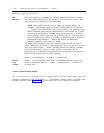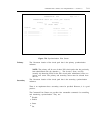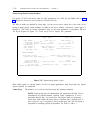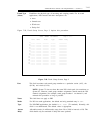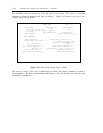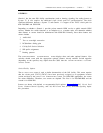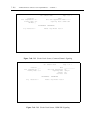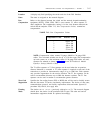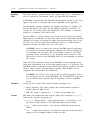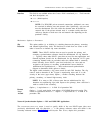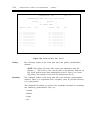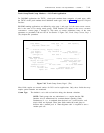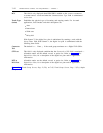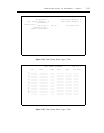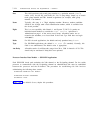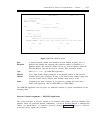
7-118
ADINISTRATION OPTIONS AND REQUIREMENTS — GENERIC 1
Signaling The default option is common-channel. This option is the same as 24th-channel or
Mode
AVD for System 85. The alternate choices are ISDN-PRI and robbed-bit.
If ISDN-PRI is optioned, then the DMI-BOS field disappears and the Connect field
appears. The choice of signaling mode used is dependent on the application.
Common-channel signaling multiplexes all signaling information for channels 1-23
into the 24th-channel. This makes the full 64K-bps bandwidth of channels 1-23
available for voice and/or digital data transmission. This capability is sometimes
referred to as Alternate Voice Data (AVD).
The term AVD is a software attribute for a trunk. It (AVD) allows pure 64K-bps
digital data to be transmitted over those DS1 trunks that use 24th-channel signaling.
Although AVD trunks are designed for digital data transmission they may also be
used for voice and voice-grade data transmission. However, a pooled modem is
required to transmit voice-grade data over AVD trunks.
CAUTION: Due to a change in the evolving DS1/DMI protocol specification,
two methods for providing 24th-channel signaling exist. The two methods are
not compatible with each other. The earlier method is known as the AT&T
proprietary format (conventional T1 test equipment cannot analyze it). This
latter version is known as the DMI-BOS format (T1 test equipment can analyze
this format).
Either the AT&T proprietary format or the DMI-BOS format, depending on the
circuit pack configuration, may be used with another System 75 or System 85. The
DMI-BOS format is required to provide 24th-channel signaling capability with other
vendors’ digital switches. Common-channel signaling (both methods) are not
compatible with channel banks and multiplexers.
CAUTION: The TN722 circuit pack provides the AT&T proprietary format;
the circuit pack does not provide DMI-BOS. The TN722B/TN767 circuit pack
may be administered to provide either the proprietary format or DMI-BOS
format.
DMI-BOS
Assigns the DS1 format. Field encodes and their descriptions are:
n
y
AT&T proprietary. This option assumes that common-channel signaling is
selected; otherwise, RBS is used.
DMI. This option is equivalent to a 1 in field 14 of procedure 260.
Connect
This field is not available unless the Signaling Mode field is translated isdn-pri.
Field encodes and their descriptions are:
●
●
●
network (default option) — implies that the Generic 1 will function as user
side and the switch connects to the ISDN-PRI public network facilities.
pbx — implies that a Generic 1 will connect to ISDN-PRI private network
facilities.
host — implies that a Generic 1 will function as network side and the switch
connects to a host computer (which is always user side).



